From Loreto we took the bus to La Paz, about a four hour ride. The buses are quite modern and comfortable, even wifi (if it’s working!). In La Paz we stayed at Posada de las Flores, a small hotel we’d stayed at previously. It’s a bit of a walk from downtown, but a nice place.
Most of the diving around La Paz is near Isla Espirito Santo, which means long boat rides (e.g. 1.5 hrs). We found that Fun Baja offered diving combined with camping on the island. That meant only a single trip out to the island, and more contact with the outdoors.
The ride out to the island was a little rough but not too bad. It was only the two of us and our dive guide so we just had a small boat. The camping was quite civilized, in large tents you could stand up in, with cots to sleep on. Meals were provided. There were even showers. One downside was that they didn’t really have facilities for rinsing dive gear which isn’t ideal for the equipment. They did have a fresh water rinse tank for underwater cameras but it wasn’t especially clean.
There was a free diving competition group also staying there. It was interesting hearing them talk about their sport. Among the results was a new national record for the USA at 93m (305 ft)
The diving was great. Although Loreto, La Paz, and Cabo Pulmo are not that far apart, it's interesting how you see different kinds of fish and other sea life at each location.

We enjoyed the wreck dive on the Fang Ming, not so much for the wreck itself, but for the sea life around and on it. There was a big sea turtle lying on the top of the wreck. Usually sea turtles swim away when they see you, but this one is obviously used to people.
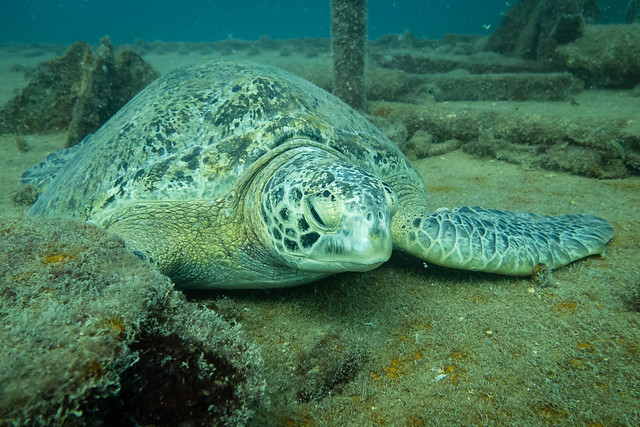
There were jewel and green moray eels.
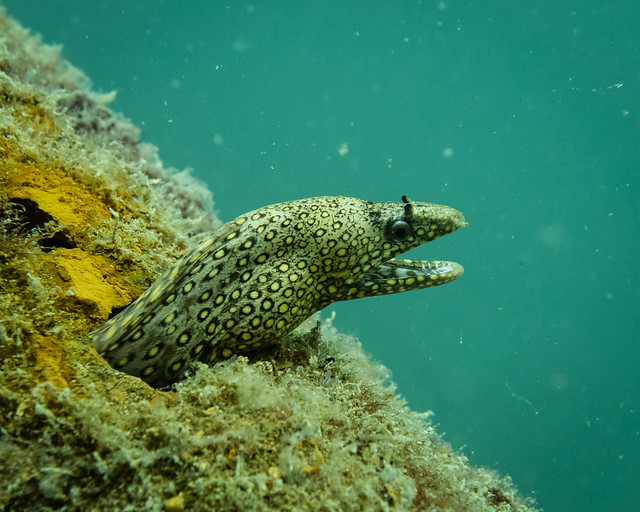
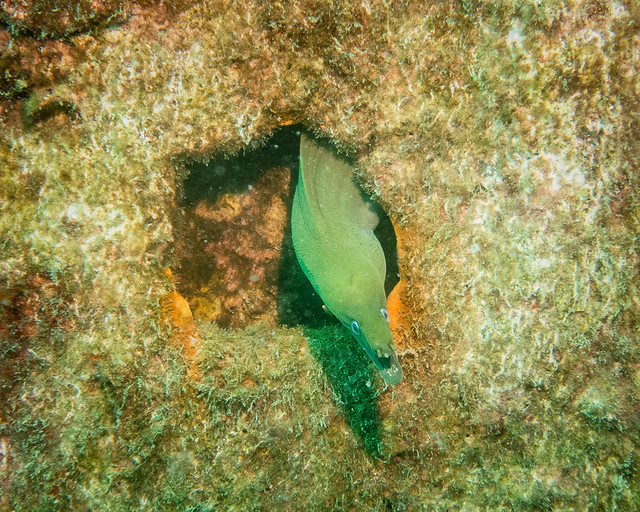
There were lots of trumpetfish around the wreck and for a change they let us get a little closer.
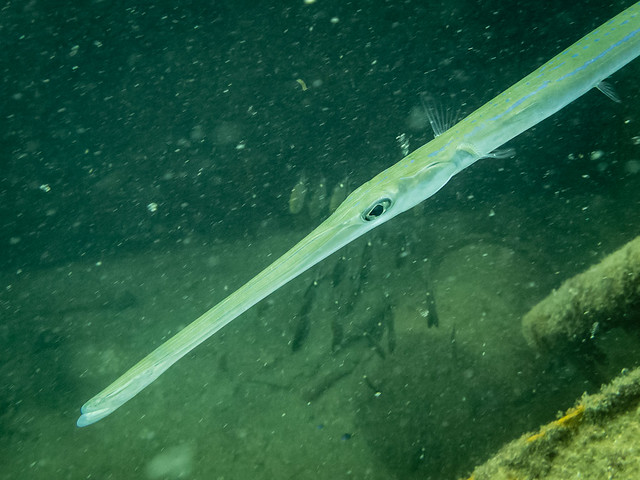
Around the sea lion colony (another post to come on that) there were large schools of small fish - I think sardines?

We saw several kinds of jawfish. They live in holes on the bottom and usually hide when you come close, but sometimes they can be lured out.
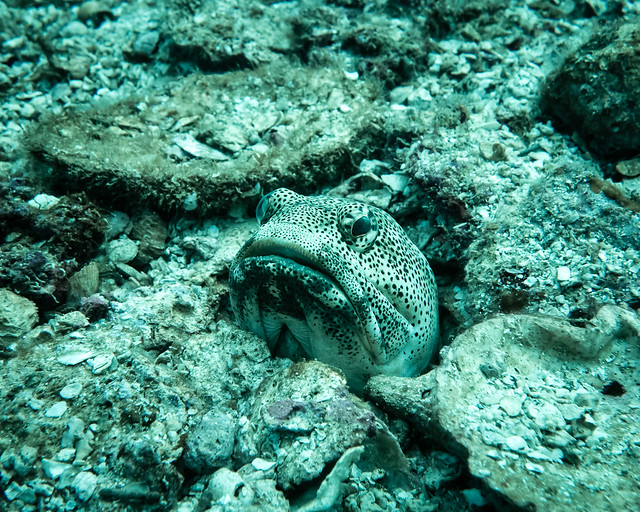
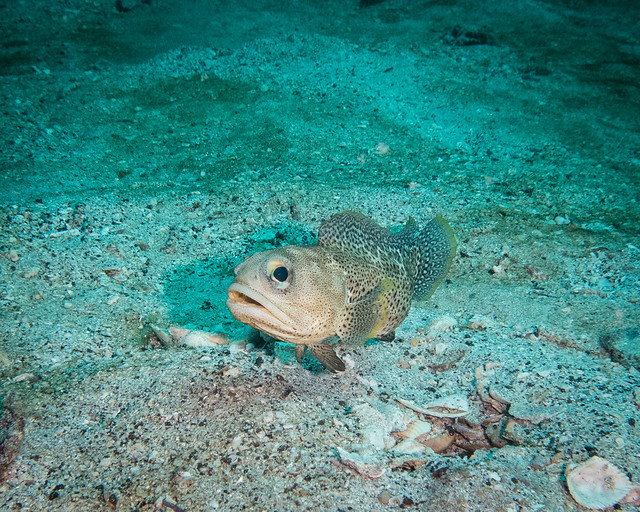
I love the bright colors of some of the fish. The small ones tend to dart around so much that they are hard to photograph but occasionally you get lucky.
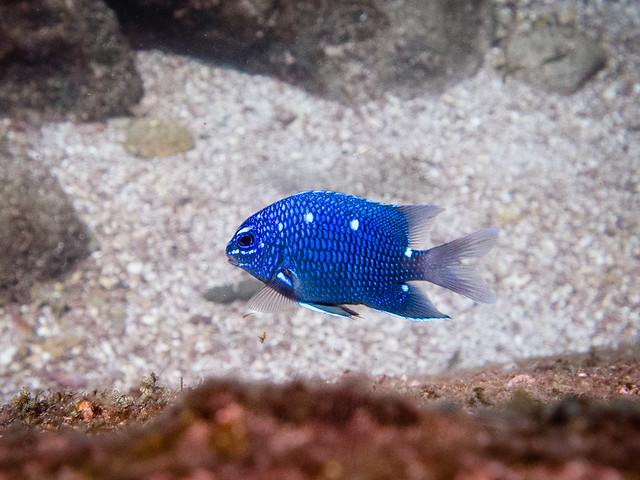

We did three dives per day and the first two days we were lucky to be just the two of us and our dive guide, Maria. After that some other divers came out and things got a bit more confused. The head office of FunBaja attempts to shuffle people and boats and guides around to minimize their costs, which is understandable, but unfortunately they don’t seem to take into account the inconvenience to their customers. We got shuffled from one boat to another several times, struggling to ensure all our gear stayed with us. Some of the people had booked snorkelling with whale sharks instead of their third dive but they wanted to keep everyone together so we ended up joining with them, which meant a couple of hours extra boat travel for us. And then they were so late (we waited two hours for them) that it got dark before we had a chance to even look for whale sharks.
The package we’d booked included a night dive. However, this turned out to not be a regular night dive. Instead, they shine a big light in the water, attracting plankton etc. which in turn attracts the mobulas (small manta rays) to feed. The dive boat was overcrowded and unlit and it turned into a bit of a circus getting ready and getting in the water. They had given us instructions to sit on the bottom to watch, being careful to not to stir up the silt and ruin visibility. Shelley and I were the first ones down and we followed instructions and settled carefully on the bottom. But the next person down proceeded to kick up a big cloud of silt. At which point we were motioned to not sit on the bottom. After 20 minutes I’d had enough and I signalled Shelley to go up. The others came up shortly after. It was nice to see the mobulas, but I’d much rather it was in a more natural setting. (Besides, it's hard to take photos in the dark!)
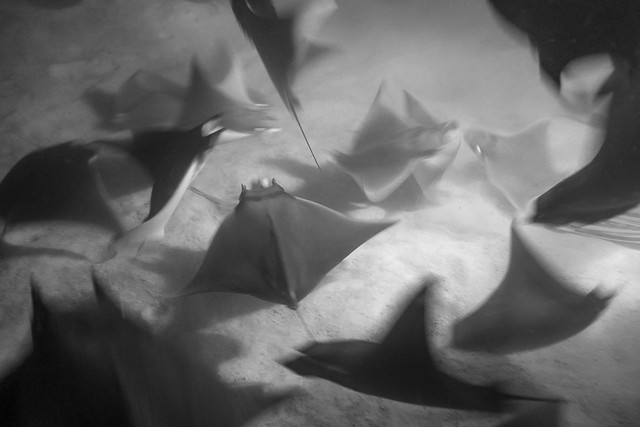
For more photos, see all 60 as a slideshow or overview
Most of the diving around La Paz is near Isla Espirito Santo, which means long boat rides (e.g. 1.5 hrs). We found that Fun Baja offered diving combined with camping on the island. That meant only a single trip out to the island, and more contact with the outdoors.
The ride out to the island was a little rough but not too bad. It was only the two of us and our dive guide so we just had a small boat. The camping was quite civilized, in large tents you could stand up in, with cots to sleep on. Meals were provided. There were even showers. One downside was that they didn’t really have facilities for rinsing dive gear which isn’t ideal for the equipment. They did have a fresh water rinse tank for underwater cameras but it wasn’t especially clean.
There was a free diving competition group also staying there. It was interesting hearing them talk about their sport. Among the results was a new national record for the USA at 93m (305 ft)
The diving was great. Although Loreto, La Paz, and Cabo Pulmo are not that far apart, it's interesting how you see different kinds of fish and other sea life at each location.

We enjoyed the wreck dive on the Fang Ming, not so much for the wreck itself, but for the sea life around and on it. There was a big sea turtle lying on the top of the wreck. Usually sea turtles swim away when they see you, but this one is obviously used to people.

There were jewel and green moray eels.


There were lots of trumpetfish around the wreck and for a change they let us get a little closer.

Around the sea lion colony (another post to come on that) there were large schools of small fish - I think sardines?

We saw several kinds of jawfish. They live in holes on the bottom and usually hide when you come close, but sometimes they can be lured out.


I love the bright colors of some of the fish. The small ones tend to dart around so much that they are hard to photograph but occasionally you get lucky.


We did three dives per day and the first two days we were lucky to be just the two of us and our dive guide, Maria. After that some other divers came out and things got a bit more confused. The head office of FunBaja attempts to shuffle people and boats and guides around to minimize their costs, which is understandable, but unfortunately they don’t seem to take into account the inconvenience to their customers. We got shuffled from one boat to another several times, struggling to ensure all our gear stayed with us. Some of the people had booked snorkelling with whale sharks instead of their third dive but they wanted to keep everyone together so we ended up joining with them, which meant a couple of hours extra boat travel for us. And then they were so late (we waited two hours for them) that it got dark before we had a chance to even look for whale sharks.
The package we’d booked included a night dive. However, this turned out to not be a regular night dive. Instead, they shine a big light in the water, attracting plankton etc. which in turn attracts the mobulas (small manta rays) to feed. The dive boat was overcrowded and unlit and it turned into a bit of a circus getting ready and getting in the water. They had given us instructions to sit on the bottom to watch, being careful to not to stir up the silt and ruin visibility. Shelley and I were the first ones down and we followed instructions and settled carefully on the bottom. But the next person down proceeded to kick up a big cloud of silt. At which point we were motioned to not sit on the bottom. After 20 minutes I’d had enough and I signalled Shelley to go up. The others came up shortly after. It was nice to see the mobulas, but I’d much rather it was in a more natural setting. (Besides, it's hard to take photos in the dark!)

For more photos, see all 60 as a slideshow or overview
No comments:
Post a Comment